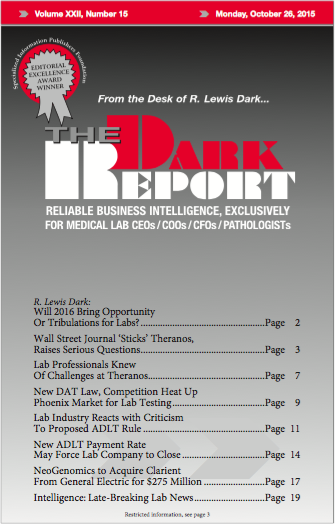CEO SUMMARY: Following months of investigation, reporter John Carreyrou of The Wall Street Journal published back-to-back reports about aspects of Theranos that the secretive company has kept from public view. Based on interviews with several employees and others with knowledge of events at Theranos, the WSJ disclosed that Theranos runs only a handful of tests […]
To access this post, you must purchase The Dark Report.


